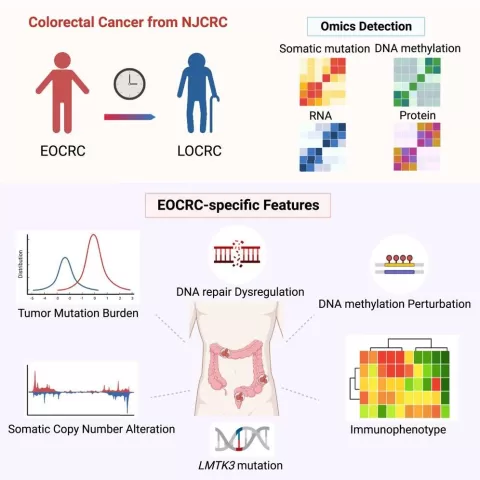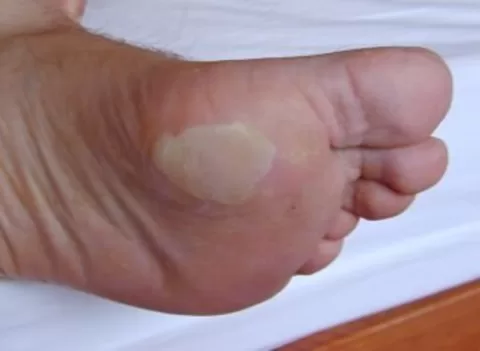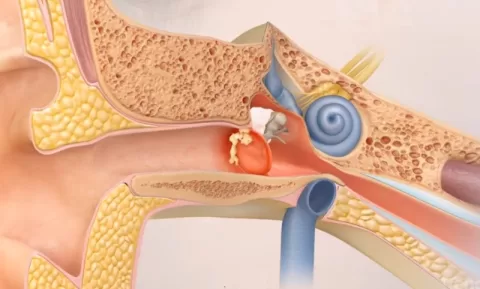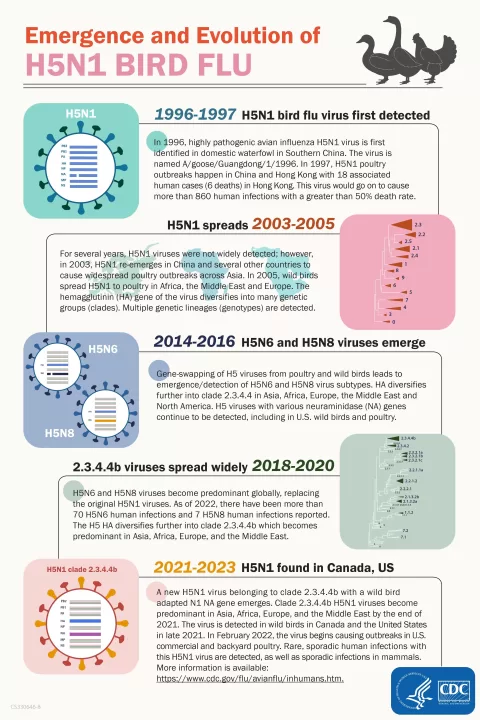ADHD in girls is a topic that is gaining much-needed attention, as it is often overlooked or misdiagnosed. Girls frequently exhibit symptoms of inattentive ADHD, which can lead to a delay in proper ADHD diagnosis due to the less disruptive nature of their behaviors, including daydreaming and heightened perfectionism. Unlike boys, who are typically more hyperactive and vocal about their struggles, girls may silently endure academic and social challenges that stem from undiagnosed ADHD symptoms. This disparity can result in feelings of anxiety, sadness, and frustration, making it crucial to raise awareness about ADHD in girls and advocate for appropriate ADHD treatment for girls. By understanding the unique ways ADHD manifests in females, we can provide the support they need to thrive both academically and emotionally.
When discussing attention deficit hyperactivity disorder (ADHD) in females, it is essential to recognize the condition’s subtler signs and symptoms, which are often masked by broader societal expectations. Oftentimes, girls with ADHD can display inattentive traits, leading to a struggle with maintaining focus in academic settings and establishing healthy peer relationships. This invisibility of ADHD in girls can be attributed to societal expectations that encourage them to be more compliant and perfectionistic, thus complicating the ADHD diagnosis for girls. As a result, understanding how ADHD symptoms manifest differently in girls is vital in addressing their unique needs. Advocating for awareness and treatment accordingly is crucial in empowering girls as they navigate their academic and social lives.
Understanding ADHD Symptoms in Girls
ADHD symptoms in girls can often be subtle and easily overlooked, leading to a late diagnosis. Girls typically exhibit signs such as daydreaming, anxiety, and issues with attention rather than the more obvious hyperactive behavior commonly associated with ADHD. Inattentive ADHD manifests through a lack of focus on tasks, distractibility, and forgetfulness, creating a facade of disengagement rather than disruptive behavior. For parents and teachers, recognizing these symptoms can feel challenging, as they may mistake them for shyness or laziness rather than signs of a deeper issue.
Moreover, perfectionism emerges as a common trait in girls with ADHD, where they exhibit a strong need to achieve unrealistic standards, often leading to immense stress and feelings of inadequacy. While a boy might draw attention through impulsive actions, a girl may quietly struggle with heavy emotional weight, thus suffering in silence. By understanding these nuances, caregivers can better support and recognize the experiences of girls with ADHD.
In the context of education, girls often find themselves navigating a complicated landscape filled with social expectations and academic pressures. This creates an environment where they may internalize their struggles instead of communicating them. Symptoms like forgetfulness and poor attention to detail are often dismissed by peers and educators, contributing to a cycle of confusion and self-doubt. If parents suspect the presence of ADHD symptoms, early intervention is crucial to guide girls toward effective coping strategies and support networks.
Furthermore, understanding these behaviors extends beyond the classroom. Social intricacies complicate friendships for girls with ADHD, where they may falter in areas like remembering social cues or maintaining eye contact. Recognizing these ADHD symptoms in girls can pave the way for compassionate conversations about mental health, self-advocacy, and the importance of seeking professional help.
Navigating ADHD Diagnosis in Girls
The process of ADHD diagnosis in girls can be significantly delayed due to societal biases and stereotypes regarding gender behavior. Many professionals associate hyperactivity and disruptive behaviors more closely with boys, which results in a distinct lack of attention given to girls exhibiting inattentive symptoms. This misunderstanding often prevents timely diagnosis and treatment, exacerbating feelings of frustration and inadequacy among girls who have ADHD. As research indicates, the tendency to overlook ADHD in girls forces them to cope with their challenges alone, often leading to academic and emotional difficulties that could have been mitigated with early intervention.
To address these disparities, it’s critical for parents and educators to educate themselves about ADHD in girls specifically, ensuring they recognize the signs that frequently differ from those seen in boys. For instance, excessive talking in girls might be viewed as normal social behavior, rather than hyperactivity. A thorough evaluation by a trained professional can help draw a clear picture of the symptoms and allow for an accurate diagnosis. Effective diagnosis involves not just observing behaviors at school but also gathering insights from parents and teachers about the girl’s interactions and learning patterns.
Furthermore, many girls exhibit resilience to societal pressures while they struggle with undiagnosed ADHD, often masking their symptoms through perfectionism or excessive self-criticism. This resilience can lead them to maintain high academic performance in early grades but can be detrimental as expectations grow in later school years. As they face greater academic demands, the challenges associated with ADHD become more pronounced, highlighting the urgency of appropriate evaluations and treatments that cater specifically to girls. Both clinicians and caregivers must collaborate to create individualized treatment plans that recognize these unique attributes associated with ADHD in females.
Challenges with ADHD Treatment for Girls
When it comes to ADHD treatment for girls, tailored approaches are essential due to the differing ways in which symptoms manifest compared to boys. While stimulant medications are a common form of treatment, it’s important to consider the unique challenges girls face, such as social anxiety and self-esteem issues that frequently accompany ADHD. Recognizing the prevalence of perfectionism in girls with ADHD can lead to strategies that not only address attention deficits but also support emotional well-being and self-acceptance. This might involve incorporating therapy that focuses on practical strategies for managing perfectionism and developing self-compassion.
Additionally, girls’ responses to ADHD treatment can vary widely, making it crucial for healthcare providers to adopt a personalized approach. Monitoring how treatment affects their academic performance, social skills, and emotional health is essential to adjusting strategies to fit their specific needs. When treatment plans fail to accommodate the unique experiences of girls with ADHD, the chances for success decrease. Girls should be encouraged to voice their feelings about treatment, as their insights can provide invaluable information for healthcare providers aiming to improve their quality of life.
Collaboration with schools is also a key component in developing effective ADHD treatment plans for girls. Teachers, psychologists, and parents must work together to create a supportive environment that promotes success both academically and socially. By informing teachers about the unique presentation of ADHD symptoms in girls, schools can adjust their expectations and support strategies effectively, minimizing academic and social disruptions. Ultimately, a supportive network can alleviate much of the pressure girls feel and lead to improved outcomes throughout their educational endeavors.
The Impact of Perfectionism on ADHD Girls
Perfectionism in girls with ADHD can significantly influence their academic performance and emotional health. This trait often compels them to work unusually hard to attain the standards they set for themselves, resulting in elevated stress levels when they struggle to meet these self-imposed expectations. For many, this quest for perfection serves as a coping mechanism masking their ADHD symptoms, leading them to invest excessive effort into their assignments at the expense of their mental well-being.
As a consequence of their perfectionist tendencies, girls may develop anxieties surrounding academic performance; they worry about grades more than peers without ADHD. If expectations are not met, it can lead to a cycle of disappointment and diminished self-worth. Professionals working with ADHD girls should acknowledge these tendencies to provide more comprehensive care that also addresses perfectionism.
Additionally, the pressure to be perfect can create challenges in social relationships. Girls with ADHD might avoid taking risks or participating in group activities for fear of not meeting their ideals. This avoidance can limit their opportunities for social interaction and growth, leading to feelings of isolation. Addressing perfectionism within treatment strategies is vital to help girls learn to balance their goals with realistic expectations and encourage them to be more understanding of their limitations. Promoting self-compassion can empower girls with ADHD to embrace their strengths and cultivate healthier self-esteem, ultimately fostering a positive outlook on their academic and social journeys.
Social Relationships and ADHD in Girls
Social relationships can be particularly challenging for girls with ADHD due to their struggles with communication and emotional awareness. While boys may find it easier to forge friendships through shared activities, girls often navigate a more complex social landscape that values emotional ties and subtle social cues. The tendency for girls with ADHD to miss significant social signals can lead to misunderstandings and unintentional social faux pas, which can hinder their ability to form lasting connections and friendships.
Understanding these challenges is essential for parents and educators who seek to support girls with ADHD. Developing social skills through practice and role-playing can empower girls to navigate social situations more effectively, fostering stronger relationships with peers. Furthermore, nurturing an environment where girls feel safe to express their feelings and experiences allows them to cultivate empathetic connections with others. Adequate support and understanding can lead to improved social skills that benefit their overall quality of life.
Moreover, it’s common for girls with ADHD to experience rejection from peers, which can further exacerbate feelings of loneliness and anxiety. The societal pressures to maintain friendships and appear socially competent can be burdensome for these girls, leading them to adopt behaviors that conceal their ADHD symptoms rather than addressing them. Parents and educators should prioritize open discussions about social dynamics, helping girls feel validated in their experiences while equipping them with tools to enhance their social interactions. Providing a platform for girls to address concerns about fitting in and building connections can significantly impact their social confidence and resilience in the face of challenges.
ADHD and Coexisting Conditions in Girls
ADHD often coexists with various conditions in girls, including anxiety, depression, and learning disabilities. The presence of these comorbid conditions can complicate the diagnosis and treatment of ADHD, as symptoms may overlap or exacerbate each other. For instance, a girl struggling with both ADHD and anxiety may find it especially difficult to concentrate due to persistent worries, making it critical to address both conditions comprehensively to improve her quality of life. An accurate assessment should involve screening for these coexisting conditions, which can significantly impact the treatment plan.
Additionally, the interplay between ADHD and other conditions can lead to increased emotional distress. Girls often feel the pressure of societal expectations related to their performance in academics and social situations, which can heighten feelings of inadequacy and anxiety. Understanding the complexity of ADHD when combined with coexisting conditions is essential for creating effective management strategies. Treatment plans need to be tailored, taking into account how these issues influence daily functioning and emotional health, ultimately leading to more successful interventions.
Parenting Strategies for Girls with ADHD
Effective parenting strategies are critical for supporting girls with ADHD. One of the most important approaches is fostering open communication, encouraging daughters to express their feelings and experiences related to ADHD. By normalizing discussions around ADHD, parents can help reduce stigma and empower their daughters to advocate for themselves. This supportive framework can enable girls to embrace their differences and seek help when they encounter challenges or stressors in school or social settings.
Moreover, establishing structured routines and setting realistic expectations play a vital role in guiding girls through their unique challenges. Consistent routines provide a sense of stability, while breaking down tasks into manageable steps can alleviate feelings of overwhelm. By collaborating with educators and healthcare providers, parents can ensure their daughter receives comprehensive support tailored to her individual needs.
Additionally, it’s essential for parents to model resilience and self-advocacy skills. Encouraging girls to embrace failure as a learning opportunity can help build confidence and self-esteem. By celebrating progress, no matter how small, parents can instill a growth mindset that allows girls to appreciate their efforts and potential. Such affirmations are vital for building resilience and fostering a positive self-image, which can ultimately lead to more successful outcomes for girls navigating the complexities of ADHD.
The Importance of Early Intervention for ADHD in Girls
Early intervention is critical in addressing ADHD symptoms effectively. Research indicates that girls who receive prompt evaluations and treatment are more likely to experience improved academic outcomes and emotional well-being. Recognizing ADHD in girls at an early age allows for the implementation of specific strategies tailored to their learning styles and social needs, which can lead to better management of their symptoms over time. With the right support, girls can develop coping mechanisms that facilitate their success both in school and in their personal lives.
Delaying intervention can result in increased frustration, lowered self-esteem, and diminished academic performance, making it crucial for parents and educators to remain vigilant about signs of ADHD. Early intervention programs that emphasize cooperation between parents, teachers, and healthcare providers can ensure that girls receive comprehensive support that encompasses both educational and therapeutic resources.
Furthermore, early diagnosis can alleviate the emotional burden that comes with ADHD. Many girls struggle silently, feeling misunderstood and isolated due to their symptoms. A timely diagnosis can help girls understand their experiences, allowing them to seek compassionate support from friends, family, and peers. This connection can create a sense of belonging and validation that is essential for their emotional health. Overall, prioritizing early intervention can alleviate the long-term impacts of ADHD, empowering girls to thrive in all areas of life.
Frequently Asked Questions
What are common ADHD symptoms in girls?
ADHD symptoms in girls can include inattentiveness, daydreaming, anxiety, emotional struggles, perfectionism, and difficulties with maintaining friendships. These symptoms often manifest differently than in boys, leading to underdiagnosis.
Why is ADHD diagnosis in girls often delayed?
ADHD diagnosis in girls is often delayed because their symptoms, particularly inattentive ADHD, are subtler than those of hyperactive boys. Teachers may overlook signs such as quiet daydreaming or perfectionism, believing these behaviors are less disruptive.
How does perfectionism in girls relate to ADHD?
Perfectionism in girls with ADHD can manifest as excessive effort to achieve flawless work, often as a coping mechanism to manage their symptoms. This trait can also contribute to anxiety and lower self-esteem when they feel they do not meet their high expectations.
What are the most effective ADHD treatments for girls?
ADHD treatment for girls often includes behavioral therapy, psychoeducation, and medication. It’s critical to develop a personalized treatment plan that addresses their unique symptoms, focusing on improving attention, reducing anxiety, and enhancing self-esteem.
How can parents identify signs of inattentive ADHD in their daughters?
Parents can identify inattentive ADHD in girls by observing patterns such as forgetfulness, trouble completing tasks, distractibility, and relational difficulties. Keeping communication open with teachers and mental health professionals can aid in the identification process.
| Key Points |
|---|
| Girls with ADHD often exhibit inattentive symptoms such as daydreaming, anxiety, and perfectionism, which go unnoticed compared to boys’ hyperactivity. |
| The diagnosis of ADHD in girls is frequently delayed due to differing symptom presentations, leading to serious academic and emotional repercussions. |
| Girls are more likely to suffer from mood disorders and self-esteem issues related to ADHD, impacting their overall well-being. |
| Teachers and parents often misinterpret inattentive symptoms in girls as benign behaviors, which contributes to underdiagnosis. |
| Encouragement and proactive measures from parents and professionals are crucial for identifying and supporting girls with ADHD. |
Summary
ADHD in girls is a critical issue that remains largely overlooked. Girls often display symptoms that differ from the typical hyperactive behaviors seen in boys, leading to frequent misdiagnosis or a lack of diagnosis altogether. Understanding the subtle signs of ADHD, such as daydreaming, anxiety, and perfectionism, is essential for early identification and support. Awareness and proper guidance can significantly improve the academic and emotional health of girls with ADHD.
The content provided on this blog (e.g., symptom descriptions, health tips, or general advice) is for informational purposes only and is not a substitute for professional medical advice, diagnosis, or treatment. Always seek the guidance of your physician or other qualified healthcare provider with any questions you may have regarding a medical condition. Never disregard professional medical advice or delay seeking it because of something you have read on this website. If you believe you may have a medical emergency, call your doctor or emergency services immediately. Reliance on any information provided by this blog is solely at your own risk.








